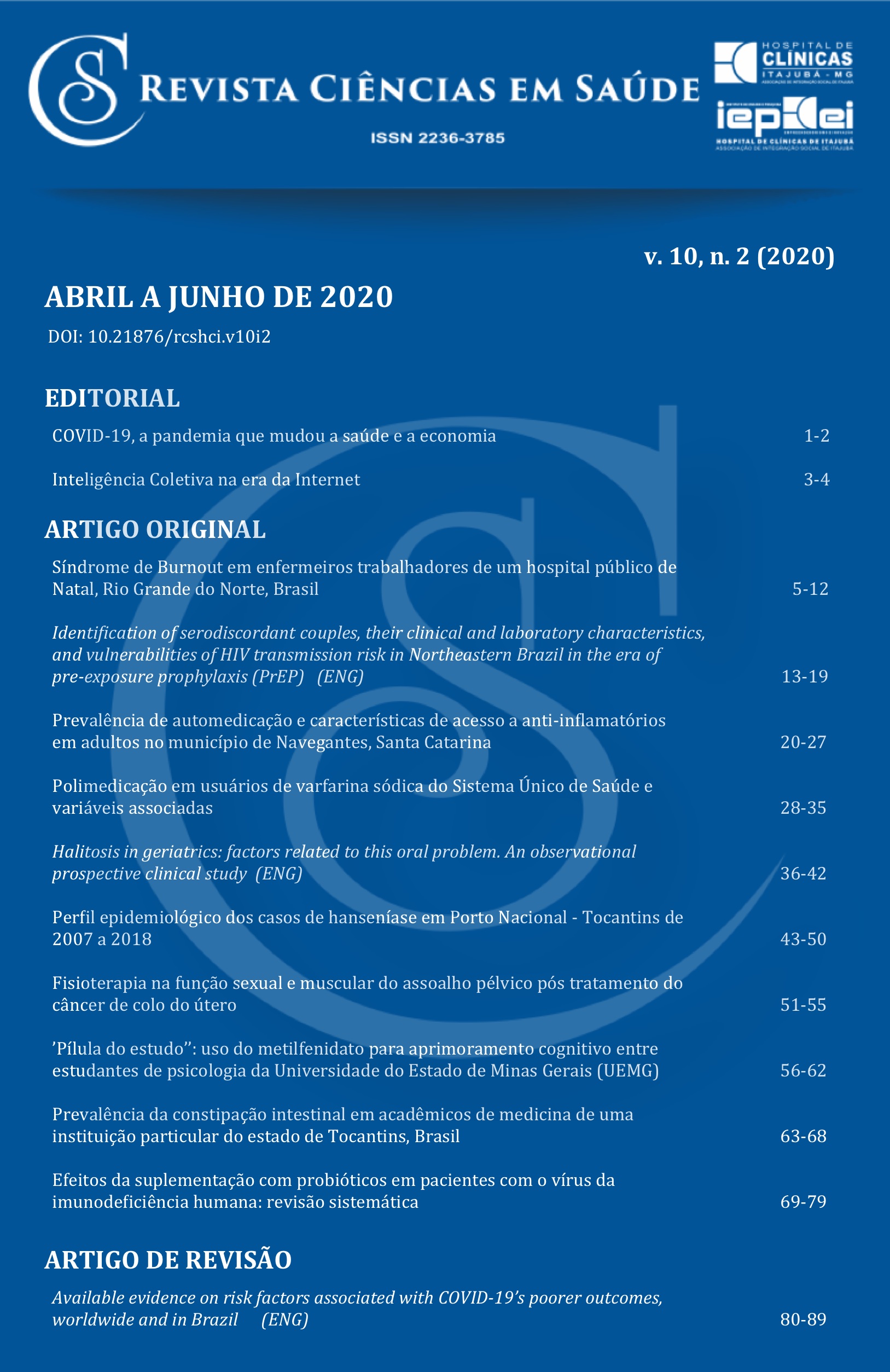COVID-19, the pandemic that changed health and the economy
Main Article Content
Abstract
Pandemics like the one currently faced with the Coronavirus (SARS-CoV-2; COVID-19) are characterized as infectious diseases that spread over large geographic regions, practically at the same time, in several countries. The pandemic emerged in the city of Wuhan in China and is believed to be related to the trade and ingestion of wild animals; however, there is uncertainty about various aspects of COVID-19's origin history, including which species have passed it on to a human being. SARS-CoV-2 is part of the beta-coronaviruses family that also includes SARS-CoV, both responsible for Severe Acute Respiratory Syndrome, and MERS-CoV, Middle East Respiratory Syndrome. Although there is a similarity, understanding the natural history of COVID-19 is essential to determine the possibilities of intervention, prognosis and course of the disease; however, data are extremely scarce, and the publications available are recent and still controversial.
Article Details
Authors maintain copyright and grant the HSJ the right to first publication. From 2024, the publications wiil be licensed under Attribution 4.0 International 
 , allowing their sharing, recognizing the authorship and initial publication in this journal.
, allowing their sharing, recognizing the authorship and initial publication in this journal.
Authors are authorized to assume additional contracts separately for the non-exclusive distribution of the version of the work published in this journal (e.g., publishing in an institutional repository or as a book chapter), with acknowledgment of authorship and initial publication in this journal.
Authors are encouraged to publish and distribute their work online (e.g., in institutional repositories or on their personal page) at any point after the editorial process.
Also, the AUTHOR is informed and consents that the HSJ can incorporate his article into existing or future scientific databases and indexers, under the conditions defined by the latter at all times, which will involve, at least, the possibility that the holders of these databases can perform the following actions on the article.
References
World Health Organization (WHO). Coronavirus disease (COVID-19) outbreak: rights, roles and responsibilities of health workers, including key considerations for occupational safety and health: interim guidance [Internet]. Geneva: WHO; 2020 [cited 2020 Jun 03]. Avaiable from: apps.who.int/iris/handle/10665/331510.
Guan WJ, Ni ZY, Hu Y, et al. Clinical Characteristics of Coronavirus Disease 2019 in China. N Engl J Med. 2020;382(18):1708‐20. doi: 10.1056/NEJMoa2002032
Hui KPY, Cheung MC, Perera RAPM, et al. Tropism, replication competence, and innate immune responses of the coronavirus SARS-CoV-2 in human respiratory tract and conjunctiva: an analysis in ex-vivo and in-vitro cultures. Lancet Respir Med. 2020;S2213-2600(20)30193-4. Epub 2020 May 7 doi: 10.1016/S2213-2600(20)30193-4
Lei J, Li J, Li X, Qi X. CT Imaging of the 2019 Novel Coronavirus (2019-nCoV) Pneumonia. Radiology. 2020;295(1):18. doi:10.1148/radiol.2020200236
Thevarajan I, Nguyen THO, Koutsakos M, et al. Breadth of concomitant immune responses prior to patient recovery: a case report of non-severe COVID-19. Nat Med. 2020;26(4):453‐5. doi:10.1038/s41591-020-0819-2
World Health Organization (WHO). Laboratory testing for 2019 novel coronavirus (2019-nCoV) in suspected human cases. Geneva: WHO; 2020. Avaiable from: apps.who.int/iris/rest/bitstreams/1272454/retrieve
Chan JF, Yip CC, To KK, et al. Improved Molecular Diagnosis of COVID-19 by the Novel, Highly Sensitive and Specific COVID-19-RdRp/Hel Real-Time Reverse Transcription-PCR Assay Validated In Vitro and with Clinical Specimens. J Clin Microbiol. 2020;58(5):e00310-20. doi:10.1128/JCM.00310-20

